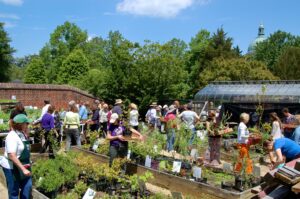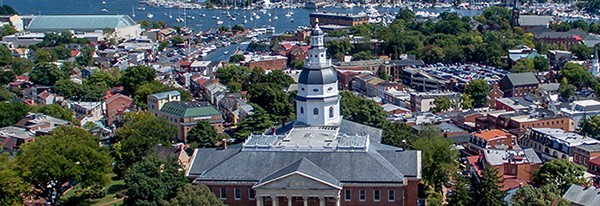Date:
Whether you have a sunny or shady garden, or are yearning for bright, annual color, long lived trees and shrubs, and dependable color that will return every year, there is something for you at the Paca Garden Plant Sale. Looking for low-maintenance, native plants? Want to feed the birds and bees? Interested in fresh, home-grown vegetables? Join us for this beloved tradition, find the perfect plants for you, and take home a piece of history!
 Perennial offerings are focused on native flowers this year, to include both new and old favorites. Dependable choices for shady gardens include ferns, hostas, and woodland phlox, while iris, sun drops and pinks are just a few of the bright colors for a sunny space. Your gardens will shine with annuals like cockscomb and coleus, and this is the best place to find everyone’s favorite hyacinth bean vine. Woody plants available are lovely spring bloomers, Japanese pieris and spirea. Take history home with a bald cypress, propagated from the specimen in the Paca Garden, or a Washington’s Buckeye, offspring of a tree discovered by George Washington in the Allegheny mountains.
Perennial offerings are focused on native flowers this year, to include both new and old favorites. Dependable choices for shady gardens include ferns, hostas, and woodland phlox, while iris, sun drops and pinks are just a few of the bright colors for a sunny space. Your gardens will shine with annuals like cockscomb and coleus, and this is the best place to find everyone’s favorite hyacinth bean vine. Woody plants available are lovely spring bloomers, Japanese pieris and spirea. Take history home with a bald cypress, propagated from the specimen in the Paca Garden, or a Washington’s Buckeye, offspring of a tree discovered by George Washington in the Allegheny mountains.
Cooking will be an adventure this summer with nine tomato varieties in many colors and eight pepper varieties ranging from a sweet red bell to hot Hungarian wax. And everything will be more flavorful with fresh basil, thyme, dill or rosemary!
Explore the Plant Sale Catalog online now, or visit the Museum of Historic Annapolis or the William Paca House and Garden to purchase a hard copy for $5. And don’t forget to put together your wishlist!
Become A Member Today! HA members receive special perks at the Plant Sale, such as early entry to the sale on Saturday at 9:30 am, and a 10% discount! Tax-deductible memberships begin at just $50. Your support is essential to our success and helps us fulfill our mission to Preserve . Protect . Connect. Click here to join HA.




